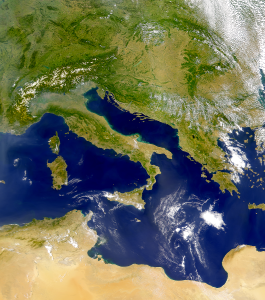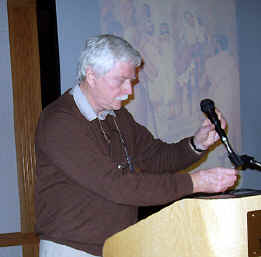volcanoes
Italy
Italy seems to have an uncertain etymology; Thucydides claims that Italos, the Sicilian king gave his name to Italy, while more recently Emilio Spedicato(h) considers that ”the best derivation we believe to be the one proposed by the Italian nuclear engineer Felice Vinci (1998), in his monograph claiming a Baltic setting for the Homeric epic: he derives Italia from the rare Greek word aithalia, meaning the smoking one.” This is thought to be a reference to Italy’s many volcanoes.
Italy today is comprised of territory south of the Alps on mainland Europe including a very large boot-shaped peninsula, plus Sicily, Sardinia and some smaller island groups, which along with the French island of Corsica virtually enclose the Tyrrhenian Sea.
The earliest proposal that Italy could be linked with Atlantis came from Angelo Mazzoldi in 1840 when he claimed that before Etruria, Italy had been home to Atlantis and dated its demise to 1986 BC. Mazzoldi expressed a form of hyperdiffusion that had his Italian Atlantis as the mother culture which seeded the great civilisations of the eastern Mediterranean region(b).
Some of Mazzoldi’s views regarding ancient Italy were expanded on by later scholars such as Camillo Ravioli, Ciro Nispi-Landi, Evelino Leonardi, Costantine Cattoi, Guido DiNardo and Giuseppe Brex. Ravioli sought to associate the Maltese island of Gozo with his proposed Atlantis in Italy.
The Italian region of Lazio, which includes Rome, has had a number of very ancient structures proposed as Atlantean; Monte Circeo (Leonardi) and Arpino(a) (Cassaro). Another aspect of Italian prehistory is the story of Tirrenide, which was described as a westward extension of the Italian landmass into the Tyrrhenian Sea during the last Ice Age, with a land bridge to a conjoined Sardinia and Corsica. At the same time, there were land links to Sicily and Malta, which were all destroyed as deglaciation took place and sea levels rose.
 It is surprising that so few researchers have commented on Italy’s part in Plato’s Atlantis narrative considering that he twice, without any ambiguity, informs us that the Atlantean domain extended as far as Tyrrhenia (modern Tuscany).
It is surprising that so few researchers have commented on Italy’s part in Plato’s Atlantis narrative considering that he twice, without any ambiguity, informs us that the Atlantean domain extended as far as Tyrrhenia (modern Tuscany).
Crit.114c. So all these, themselves and their descendants dwelt for many generations bearing rule over many other islands throughout the sea and holding sway besides, as was previously stated, over the Mediterranean peoples as far as Egypt and Tuscany. Tim.25a/b. Now in this island of Atlantis there existed a confederation of kings, of great and marvellous power, which held sway over all the island, and over many other islands also and parts of the continent; and, moreover, of the lands here within the Straits they ruled over Libya as far as Egypt, and over Europe as far as Tuscany. (Bury)
The quotation from Timaeus is most interesting because of its reference to a ‘continent’. Some have understandably but incorrectly claimed that this is a reference to America or Antarctica, when quite clearly it refers to southern Italy as part of the continent of Europe. Moreover, Herodotus is quite clear (4.42) that the ancient Greeks knew of only three continents, Europe, Asia and Libya.
Philo of Alexandria (20 BC-50 AD) in his On the Eternity of the World(g) wrote “Are you ignorant of the celebrated account which is given of that most sacred Sicilian strait, which in old times joined Sicily to the continent of Italy?” (v.139).>The name ‘Italy’ was normally used until the third century BC to describe just the southern part of the peninsula(e).<Some commentators think that Philo was quoting Theophrastus, Aristotle’s successor. This would push the custom of referring to Italy as a ‘continent’ back near to the time of Plato. More recently, Armin Wolf, the German historian, when writing about Scheria relates(f) that “Even today, when people from Sicily go to Calabria (southern Italy) they say they are going to the ‘continente’.” This continuing usage is further confirmed by a current travel site(d) and by author, Robert Fox[1168.141]. I suggest that Plato used the term in a similar fashion and can be seen as offering the most rational explanation for the use of the word ‘continent’ in Timaeus 25a.
When you consider that close to Italy are located the large islands of Sicily, Sardinia and Corsica, as well as smaller archipelagos such as the Egadi, Lipari and Maltese groups, the idea of Atlantis in the Central Mediterranean can be seen as highly compatible with Plato’s description.
If we accept that Plato stated unambiguously that the domain of Atlantis included at least part of southern Italy and also declared that Atlantis attacked from beyond the Pillars of Heracles, then this appellation could not be applied at that time to any location in the vicinity of the Strait of Gibraltar but must have been further east, probably not too far from Atlantean Italy. This matches earlier alternative locations recorded by classical writers who placed the ‘Pillars’ at the straits of Messina or Sicily. I personally favour Messina, unless there is stronger evidence that some of the islands in or near the Strait of Sicily such as the Maltese or Pelagian Islands or Pantelleria were home to the ‘Pillars’.
(a) http://www.richardcassaro.com/hidden-italy-the-forbidden-cyclopean-ruins-of-giants-from-atlantis
(b) Archive 2509P (Eng) Archive 2943 (Ital)
(c) Archive 2946
(d) Four Ways to Do Sicily – Articles – Departures (archive.org)
(e) https://profilbaru.com/article/Name_of_Italy *
(f) Wayback Machine (archive.org)
(g) http://www.earlychristianwritings.com/yonge/book35.html
(h) http://2010-q-conference.com/ophir/ophir-27-10-09.pdf
Neer, Katherine Fordham
Katherine Fordham Neer is an American writer, editor and researcher. She appears  to accept the existence of Atlantis having published a brief paper(a) with the odd title of Shocker: 9 Reasons Atlantis May Have Been Real, which simply recounts the existence of natural catastrophic events such as tsunamis, earthquakes, volcanic eruptions and floods. Disappointingly, Neer offers nothing to support the existence of Plato’s Atlantis exemplified by number 8 of her ‘reasons’ entitled ‘The Ocean is Really, Really Big’!
to accept the existence of Atlantis having published a brief paper(a) with the odd title of Shocker: 9 Reasons Atlantis May Have Been Real, which simply recounts the existence of natural catastrophic events such as tsunamis, earthquakes, volcanic eruptions and floods. Disappointingly, Neer offers nothing to support the existence of Plato’s Atlantis exemplified by number 8 of her ‘reasons’ entitled ‘The Ocean is Really, Really Big’!
(a) See: https://web.archive.org/web/20170504041729/https://roohit.com/b5495a
Red, White and Black
The Red, White and Black stone which Plato said had adorned the buildings of its port city, has led Atlantis seekers to eagerly follow up this apparently obvious clue. However, as with so many aspects of the Atlantis story, this particular detail does not provide us with anything like a clear pointer to any specific location.
Jürgen Spanuth relates[015.125] how the ancient Canarians decorated their temple with red, white and black rock, the colours of tufa, pumice and lava. The cliffs of Santorini are also known to display red, white and black rock. These three materials are frequently found in the vicinity of volcanoes(b) and may be considered a valuable clue to the location of Atlantis. However, this combination of rock colours is not exclusive to volcanic localities as Jim Allen has demonstrated at Pampa Augallas in the Andes and Peter Daughtrey at his Silves site in Portugal[0893.120].
Although Atlantis was destroyed by an earthquake, volcanoes are often located in the same general region such as in the Central Mediterranean which is both seismically and volcanically very active and, in my opinion, the prime candidate as the home of Atlantis. This view is endorsed by Plato himself who twice (Tim.25b & Crit.114c) told us that the territory of the Atlantean alliance stretched from North Africa as far as Tyrrhenia in Italy. I further propose that this was on a north/south axis.
Jim Allen has found the same three rock colours at his Bolivian site and further afield, Ian Wilson points out[185] that red, white and black bricks were used extensively in Çatal Hüyük. Not to be excluded, Diaz-Montexano has produced photos on his website of pre-Roman structures near Gibraltar that incorporate red, white and black blocks in their construction. Jonas Bergman has indicated that similarly coloured stone is to be found in Morocco. Other locations include the Azores, Algeria and Sardinia.
Andrew Jones, a professor of archaeology, has noted that the builders of Carn Ban, one of the ‘Clyde Cairns’ on Scotland’s Isle of Arran employed red white and black stones in its design – pure coincidence I’m sure! Robert Hensey in his book on Newgrange [1766.39] refers to Jones and the growing interest in the use of colour in ancient monuments.
>Fatih Hodzic in an attempt to enhance his claim of an Adriatic Atlantis has noted; “The Atlanteans used stone for building: ‘one kind was white, another black, and a third red’. White and black stone is still quarried on Island Bra? (Croatia) and red stone in the Bay of Kotor (Montenegro).”(c)<
Some(a) have sought to link the red, white and black of the Nazi swastika with Plato’s reference!
(b) How are volcanoes and earthquakes related? | Volcano World | Oregon State University (archive.org)
Earthquake *
An earthquake, not a volcanic eruption resulted in the inundation of Atlantis according to Plato’s account. Although, for those who believe that the destruction of ancient Santorini was the inspiration behind Plato’s Atlantis story, it is not difficult to imagine an earthquake accompanying an eruption such as that which occurred on Thera in the 2nd millennium BC, particularly in an area that had been prone to frequent earthquakes over thousands of years.
My reading of Plato’s description of the demise of Atlantis is that there is no suggestion whatsoever of a volcanic eruption causing its destruction, which rules out the Minoan Hypothesis. Instead, Plato describes it as sinking into a shallow watery grave following an earthquake. Many commentators have suggested that this was the result of a tsunami generated by the earthquake, which can be a common occurrence. Usually, flood waters created by tsunamis eventually return to the sea, exposing the land again. So I have concluded that the most likely explanation is that Atlantis sank as a result of liquefaction, which can accompany earthquakes, depending on the type of soil upon which structures have been built.
Stavros Papamarinopoulos at the 2005 Atlantis Conference highlighted(h) the part played by earthquakes in the description of the ancient Athenian Acropolis in the Atlantis narrative, which he saw as a part of a 50-year ‘seismic storm’ which ravaged the Eastern Mediterranean around the 12th century BC [629.499]. Amos Nur & Eric H. Cline have written about this period of intense seismic activity in a paper on the Academia.edu website(l).
Later, in 365 AD, a massive earthquake near Crete, killed thousands, caused damage in Alexandria and submerged the Roman city of Neapolis on the east coast of Tunisia, which has only recently been rediscovered(j). On Crete, some land was uplifted by as much as 30 feet.
However, earthquakes in the region have continued ever since. Dr. Iain Stewart recounts how an earthquake in Greece in the 5th century BC led to the death of 20,000 Spartans(i).
Earthquakes were once thought to be a form of divine retribution, so when an earthquake in 1570, caused death, damage, and the alteration of the River Po’s course, ‘infallible’ Pope Pius V declared it to be the consequence of god’s wrath against the Jews!(b)
A Ph.D. Dissertation by Jamie Rae Bluestone investigates early understanding of earthquakes, which inevitably touches on the Atlantis story(a).
A recent paper by Marc-Andre Gutscher discussed the Cadiz subduction zone, which appears to be ‘locked’ and consequently liable to generate very strong earthquakes over long return periods. Gutscher offered evidence of deposits dated to 12000 BC which ‘may correspond to the destructive earthquake and tsunami described by Plato’. However, he recognised that Plato describes a Bronze Age society, while Spartel Island in the Strait of Gibraltar would only have been inhabited by ‘simple fishermen’ unlikely to have merited a mention in the records of the Egyptian priests.
In the Mediterranean, the Aegean and Turkey are the most seismically active, followed by Italy (including Sicily)(f) and North Africa from Morocco to Tunisia. There is a European Earthquake Catalogue that graphically illustrates earthquake activity over the past 1,000 years(e). Italy is also home to most of the active volcanoes in the Med.
Ben Davidson, promotes the idea that earthquakes are caused by solar activity (c) and offers what he considers compelling evidence on a YouTube clip(d).
Up-to-date earthquake information is available on the Geofon website(g).
A recent (April 2022) report(k) offered evidence “For the biggest earthquake in human history”……. “a terrifying magnitude-9.5 megaquake that caused a 5,000-mile-long (8,000 kilometers) tsunami and prompted human populations to abandon nearby coastlines for 1,000 years.
The earthquake struck about 3,800 years ago in what is now northern Chile when a tectonic plate rupture lifted the region’s coastline. The subsequent tsunami was so powerful, it created waves as high as 66 feet (20 meters) and traveled all the way to New Zealand, where it hurled car-size boulders hundreds of miles inland, the researchers found.”
[The words ‘seismology’ and ‘epicentre’ were coined in 1858 by an Irishman, Robert Mallet (1810-1881)]
(b) https://www.newser.com/story/211354/medieval-quake-rocked-city-moved-big-river-forever.html
(c) https://www.suspicious0bservers.org/
(d) https://www.youtube.com/watch?v=yBvo7lvf
(e) https://www.emidius.eu/SHEEC/catalogue/
(f) https://gisetc.com/european-earthquake-risk-concentrated-around-the-mediterranean/
(g) https://geofon.gfz-potsdam.de/eqinfo/eqinfo.php
(i) https://www.bbc.co.uk/history/ancient/greeks/atlantis_01.shtml
(j) Submerged Ancient Roman City Of Neapolis Discovered In Tunisia (archive.org) *
(k) Scientists find evidence for biggest earthquake in human history | Live Science
(l) (99+) 2000 Nur and Cline JAS “Poseidon’s Horses” article | Eric H Cline – Academia.edu
Zeilinga de Boer, Jelle
Jelle Zeilinga de Boer is anemeritus professor of geology at Wesleyan University in Middletown, Connecticut and co-author of  Volcanoes in Human History[681] [together with fellow geologist Donald Theodore Sanders. Chapter three of their book is entitled ‘The Bronze Age Eruption of Thera: Destroyer of Atlantis and Minoan Crete?’ in which they add their weight to the suggestion that the Theran eruption played a part in the development of the story of Atlantis (p.70).
Volcanoes in Human History[681] [together with fellow geologist Donald Theodore Sanders. Chapter three of their book is entitled ‘The Bronze Age Eruption of Thera: Destroyer of Atlantis and Minoan Crete?’ in which they add their weight to the suggestion that the Theran eruption played a part in the development of the story of Atlantis (p.70).
What is remarkable is that the two geologists were apparently so seduced by the Minoan Hypothesis and in spite of Plato’s clear statement that Atlantis was destroyed by an earthquake they were prepared to contradict him and support instead the idea that a volcanic eruption was responsible. They also link the eruption with the Flood of Deucalion. In 2005 they co-authored a companion book, Earthquakes in Human History[0984].
Some of Zeilinga de Boer’s views coincide with those of William Lauritzen as expressed in his recent book, The Invention of God. Haraldur Sigurdsson the volcanologist, has also suggested that volcanic eruptions, particularly Thera, have influenced the development of Greek myths such as Hesiod’s Theogony and Plato’s Atlantis!
